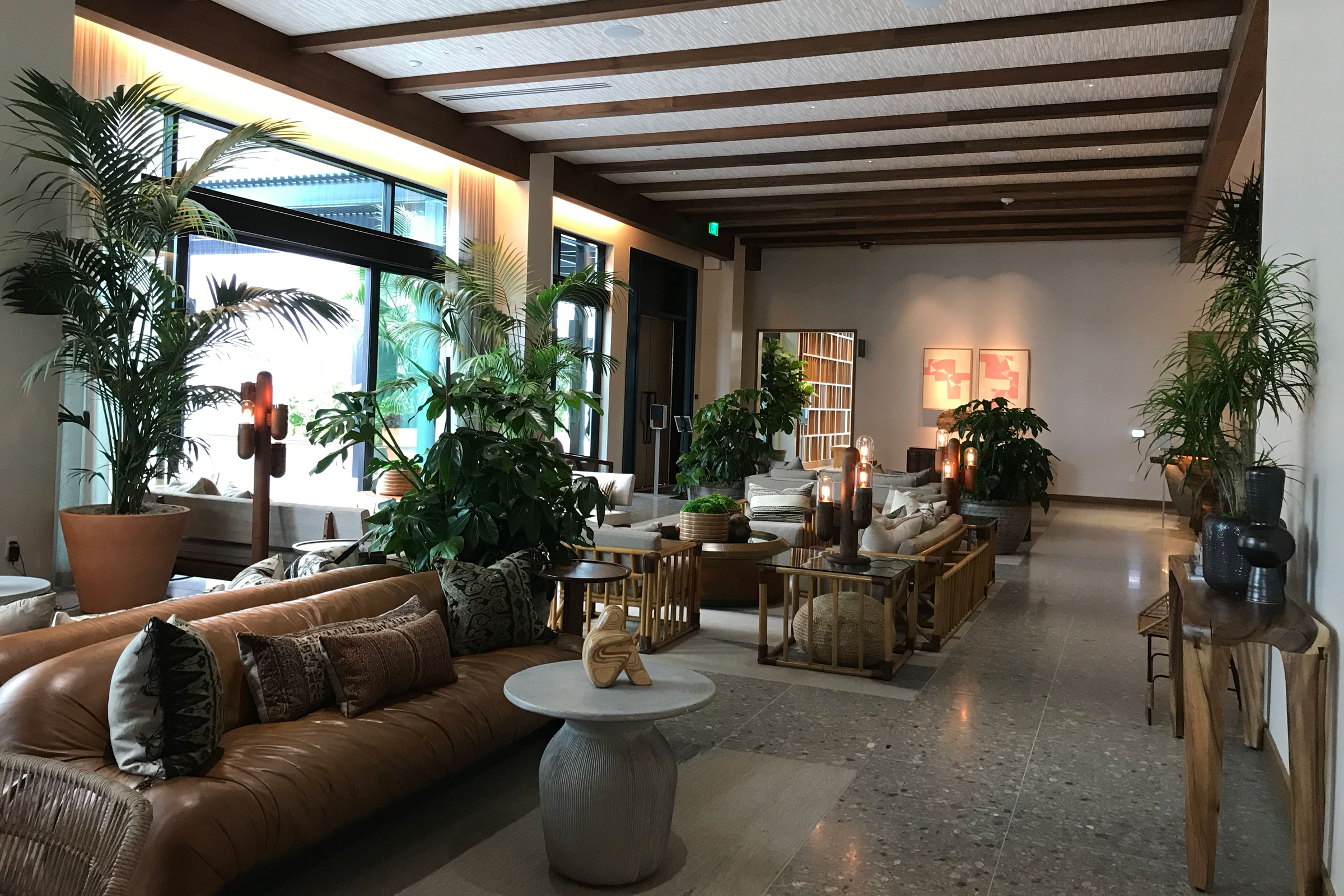Story at a glance:
- There are seven sustainable interior design principles based on climate, health, and equity.
- Designers and builders can make their work fit in a circular economy by following these principles.
- Repurposing buildings and integrating reclaimed materials in projects are happening all over the world.
Many designers and builders are accustomed to creating solutions for their clients using new building materials—from countertops to flooring and everything in between. It’s convenient to purchase them from a catalog or online, ship to the construction site, and install.
But it’s becoming increasingly clear that this traditional way of working is unsustainable—tearing out the old to make space for the new when renovating leads to huge amounts of landfill waste. New builds require energy-intensive extraction of raw materials to manufacture new products with heavy carbon footprints.
To become more sustainable some designers and builders are seeking innovative ways to reduce waste and keep carbon emissions low. Let’s look at how they’re succeeding through sustainable interior design.
What is Sustainable Interior Design?
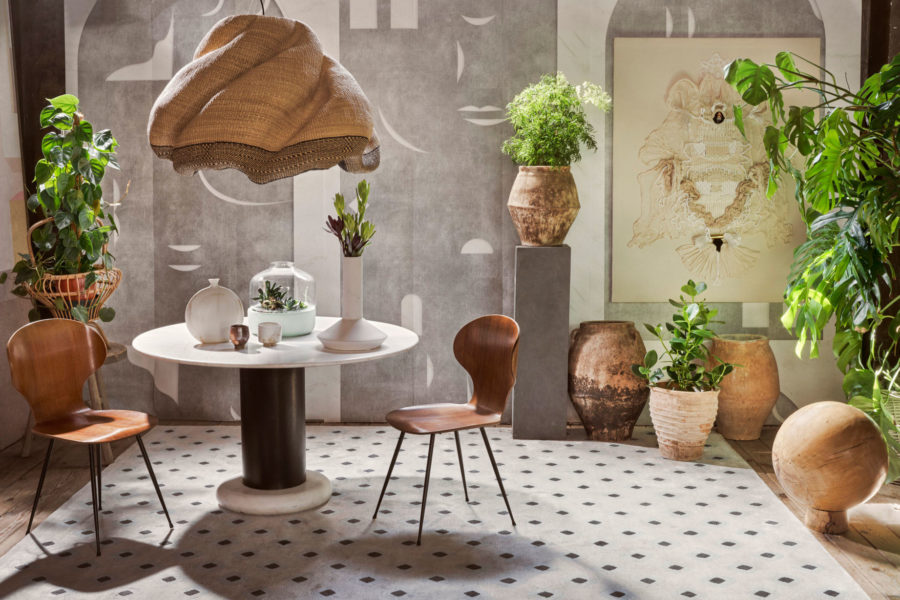
Designers are coming up with innovative ways to make interior design products more sustainable, including using this PET lamp. Photo by Manolo Yllera
Sometimes called eco-design or environmentally friendly design, sustainable interior design is the scaffold designers and builders use to take a holistic approach when creating a structure’s interior in terms of:
- Waste reduction
- Natural resource conservation
- Energy efficiency
- Environmental protection
- Climate mitigation and adaptation
- Human health promotion
- Economic and social justice
These tenets are rooted in the threefold sustainability position of the American Society of Interior Designers (ASID) based on climate, health, and equity. ASID believes their professional obligation is to minimize environmental impacts and move toward regenerative design.
More specifically with respect to climate, ASID says “interior design has a role in reversing the negative impacts of climate change by focusing on eliminating emissions, designing for adaptability and resilience, and reducing resource consumption while supporting a circular economy.”
Considering that, according to the EPA, Americans discarded more than 12 million tons of household and office furnishings in 2018 alone with more than 80% landfilled, if designers and builders diverted some of it for reuse or repurposing in their projects, it would contribute to creating the circular economy we need in the 21st century.
Does Sustainable Design Require a Change in Thinking?
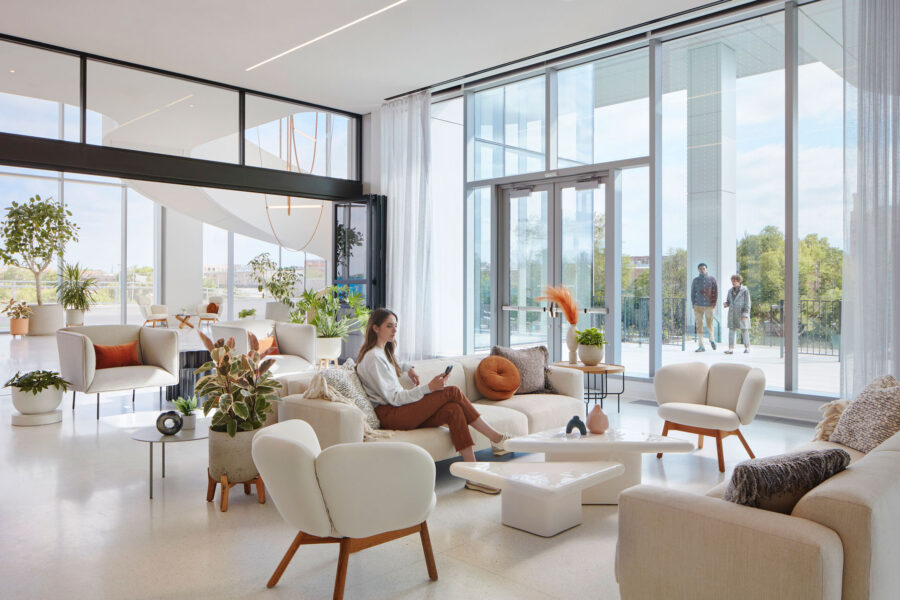
The interior design of 1229 W Concord, designed by Gensler, feels warm and inviting—more hotel or living room than life sciences building. Photo by Kendall McCaugherty
To put the seven principles of sustainable interior design into practice, a designer or builder must transition from a traditional mindset to one that allows a designer or builder to free their creativity and imagination even more. To succeed, it requires a total shift in your approach to whatever task is at hand.
Typically the starting point of designers and builders is to decide on the effect they wish to create. Then, as the concept evolves, you’ll select the best materials, colors, and textures to produce that effect. Eventually price plays a role in your thought process.
However, the shift required in sustainable building design is to start not with your idea, but with a pre-owned object or used building material—like a piece of furniture or a wooden floor. Then ask yourself: What could this object or material become with a few changes or in a new space?
Once you pose this question it’s easy to see how an antique bathtub could be transformed into a sofa or reclaimed wood into a false ceiling.
The Principles of Sustainable Interior Design
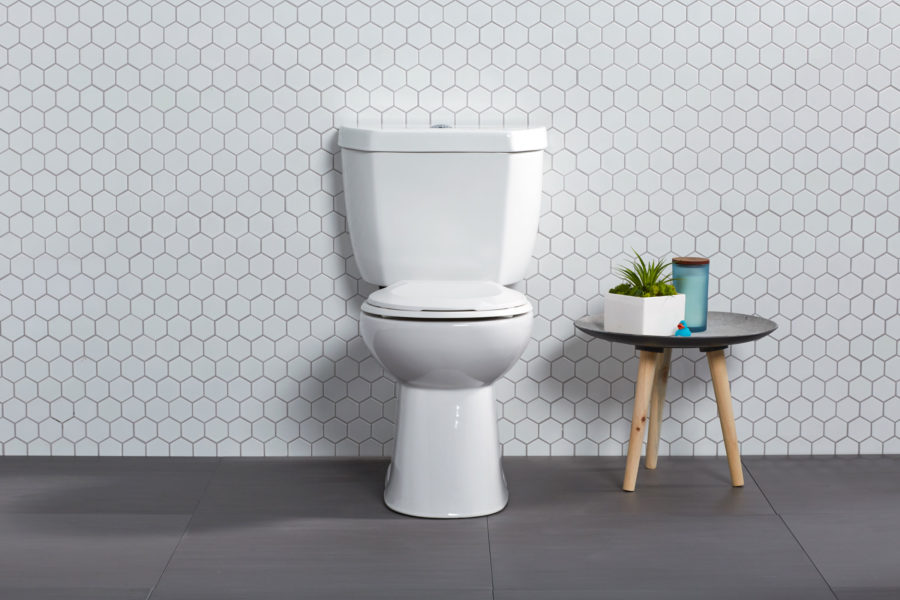
The type of toilet you choose contributes greatly to a project’s overall water efficiency—and the most efficient toilets only use less than 1.28 gallons per flush. Photo courtesy of Niagara
Sustainable interior designers and builders should apply these seven principles of sustainable interior design to all aspects of their projects. These include:
- Physical layout of a home or office
- Use of vertical and horizontal space in a building
- Plumbing, electric, and HVAC systems of a structure
- Building materials used to construct interior walls and floors of a building
- Furnishings, fixtures, and decor of a residence or commercial center
For example, when implementing the seven sustainable interior design principles listed above, designers and builders may choose to:
- Collect rainwater to flush or do laundry
- Install low-flow faucets and toilets
- Repurpose furniture and building materials in innovative ways
Sustainable Interior Design Tips
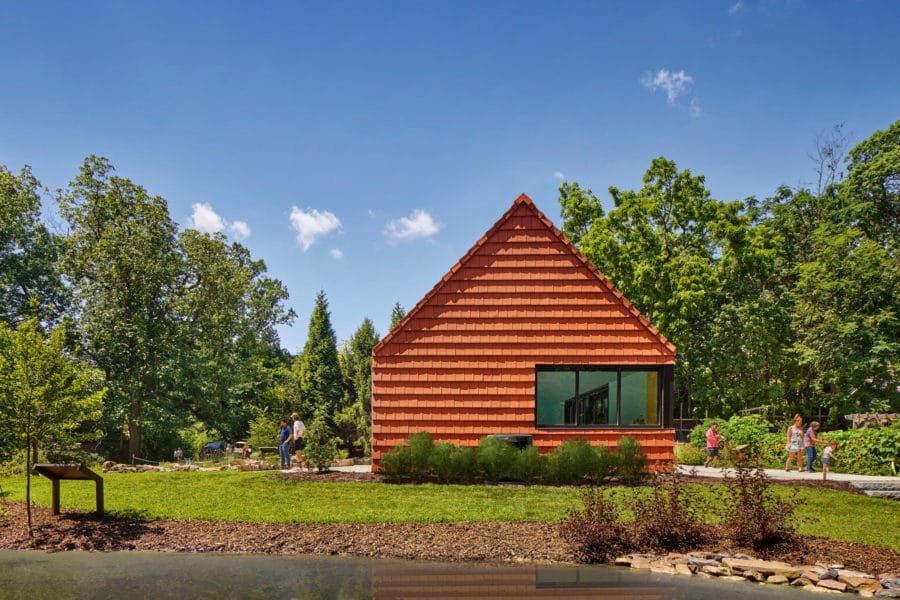
Ludowici wanted to create a structure that would not only withstand time but also evolve and become a part of the natural environment. Photo by Halkin Mason Photography
Let’s consider each principle of sustainable interior design outlined above. We’ll suggest some specific ways to incorporate them in your design and build. Many of them overlap, so we categorize these tips to the principle that each one most closely exemplifies.
1. Waste Reduction
Thrift and antique stores hold treasures waiting to be repurposed, reupholstered, or used as is. Kaiyo is a large online marketplace where you can buy or sell pre-owned furnishings of well-known, high-quality brands in like-new condition at steep discounts. And many international companies like Ikea have started buy and resell programs at participating locations to make it easier for you. Better yet, stay local and scout out great finds close to your project.
BioGlass is made of 100% recycled glass and may be used for countertops, wall coverings, or shower doors. Terrazzo, used for flooring, contains recycled glass and other demolition materials like stone or marble, crushed and bound by epoxy and cement.
2. Natural Resource Conservation
Trees and their products are natural resources. As deforestation and wildfires increase worldwide, this loss only adds to the estimated 46% of the planet’s trees already downed to make way for agriculture, suburban sprawl, and urban expansion, according to Yale research. More than 15 billion trees are cut down every year.
Designers and builders can use reclaimed wood instead of virgin wood. Local salvage shops or demolitions are two promising sources.
3. Energy Efficiency
EnergyStar appliances certainly contribute to increased energy efficiency in projects. Designers and builders can do even more by purchasing smaller versions or possibly fewer. For instance, does a single household need two washing machines or refrigerators?
LED lights are the most efficient light bulb on the market today. If possible, retrofit an existing system with LEDs rather than purchasing an entirely new one.
Heat pumps are becoming more efficient and cost competitive for both heating and cooling. Best of all, they don’t run on fossil fuels like oil or gas furnaces.
Installing a false ceiling with reclaimed wood is another way to insulate a room besides caulking around windows and doors.
4. Environmental Protection
All sustainable interior design falls into this general category of environmental protection, but in different ways as discussed in this article. To prevent further use of fossil fuels to make synthetic carpet, upholstery, flooring, wallpaper, curtains, blinds, and home decor, designers and builders could search out these and similar items fabricated exclusively of natural materials such as bamboo, cork, rattan, jute, or hemp. When the demand for petroproducts decreases, there will be less reason to drill for more fossil fuels, causing environmental degradation and destruction.
5. Climate Crisis Mitigation and Adaptation
Integrating any object or material with low embodied carbon, especially if you’re repurposing it and extending its useful life, is a way to lower its carbon footprint, and, in the process, mitigate the climate crisis. Similarly, purchasing or finding local goods cuts down on fossil fuel use for longer-distance transport as well as on travel miles, thereby reducing carbon emissions.
Home hardening to protect a structure from wildfire is a form of climate adaptation. As a sustainable builder or designer, you could incorporate home hardening as well by using recycled steel, aluminum, or used clay, terra-cotta, or ceramic tiles to cover the roof, discouraging it from catching on fire. Recycled aluminum would work well to cover kitchen countertops or the backs of wooden doors to prevent fire from entering rooms.
6. Human Health Promotion
Clean indoor air is vital for good health. If you refurbish any cabinets, apply a new stain to a wood floor, or add a fresh coat of paint on the walls, make sure you use only water-based products with low or no volatile organic compounds (VOCs). For all-natural, nontoxic paints, finishes, oils, and waxes—some of which are labeled food-contact safe by the FDA. Polished plaster is another choice for a sustainable interior design.
Another way to maintain good outdoor air quality in the vicinity of your project is to switch out a conventional fireplace with an electric model.
7. Economic and Social Justice
Equity is a cornerstone of sustainable interior design. “Equity looks at individual and community health and environmental justice and acknowledges that much of the world has benefitted less from economic development while bearing a disproportionate environmental burden,” David Bergman, program director of the Master of Professional Studies in Sustainable Interior Environments at NYSID, previously told gb&d.
To correct the social and economic injustices inherent in many of the practices of traditional construction and design, groups like the Forest Stewardship Council (FSC) certify raw materials or products as truly sustainable in every way. Specifically FSC guarantees that tropical woods meeting their standards are sustainably harvested by workers earning fair wages under good conditions.
PaperStone, made of recycled paper and cardboard bound by a plastic resin, is also FSC-certified and food safe-certified. Designers and builders practicing sustainable interior design could use PaperStone for kitchen and bath countertops, wall cladding, and partitions.
Examples of Sustainable Interior Design Projects

To highlight the specialty curated products sold at Tiny Grocer, Side Angle Side commissioned custom cabinets built by Mike Wallgren. Photo by Likeness Studio
As sustainable interior design becomes popular, more new builds and remodels are based on one or more of the principles described above. Here’s a closer look at two of them.
Big Goals for a Tiny Grocery in Texas
Nestled in a former post office in Austin is Tiny Grocery, commissioned by Steph Steele and designed by architectural firm Side Angle Side. “When designing new construction, designing for long life and loose fit allows for our work to be reused in the future,” Arthur Furman, co-owner of Side Angle Side, told gb&d in a previous interview. Most of the building’s original materials were retained and others had been reclaimed and incorporated in the new food market that doubles as a restaurant for friends and neighbors.
A Sustainable Norwegian Resort
On a small island named Stokkøya, forward-thinking architects of the firm Pir II Architects built a sustainable resort called Bydekanten constructed mostly of repurposed materials. Ingrid Langklopp, the business developer who oversees the resort, says the multi-purpose area used green glass taken from a government building demolition, facade panels from a local bank, and miscellaneous doors and windows from other projects. “We used a lot of recycled materials to build furniture,” Langklopp says. “We used old sails to make curtains; we picked up things from the ship graveyard to put on the wall.”

